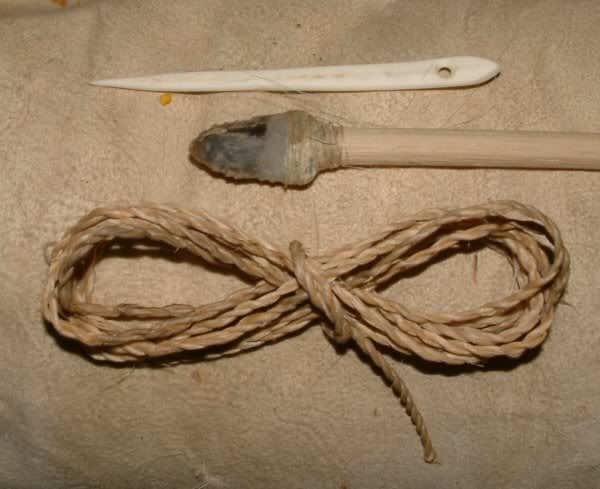What do you use to make rope or cord in the woods?
I've heard people talk about nettle, but I've never used it.
Most often I use basswood (linden) bark. To do a really good job, I strip the bark in ten or 12 foot lengths (seems to be about as much as you can get in one rip) and lay it in running water for ten days. After ten days, the inner bark will seperate easily from the outer bark. In a pinch, you can sometimes find a dead tree that is hung up (off the ground) and that the bark worms haven't yet got at. This bark will sometimes seperate quite easily.
Using a length of the inner bark, roll on your thigh, two lengths at a time - to make rope or cord. This cord is stronger than and equal thickness of hemp.
Another method is to roll three strands, one at a time, and braid them. To make a longer section of rope, just make sure the three pieces you are working with are of different lengths and add (splice) in a section at a time with about a one foot lap.
Fresh basswood bark also makes good temporary tumps for carrying heavy items.
Another good bark to use is cedar. This is easier to seperate, but harder to get as long of pieces. Cotton wood inner bark also makes a good cord, though not as strong.
PG
I've heard people talk about nettle, but I've never used it.
Most often I use basswood (linden) bark. To do a really good job, I strip the bark in ten or 12 foot lengths (seems to be about as much as you can get in one rip) and lay it in running water for ten days. After ten days, the inner bark will seperate easily from the outer bark. In a pinch, you can sometimes find a dead tree that is hung up (off the ground) and that the bark worms haven't yet got at. This bark will sometimes seperate quite easily.
Using a length of the inner bark, roll on your thigh, two lengths at a time - to make rope or cord. This cord is stronger than and equal thickness of hemp.
Another method is to roll three strands, one at a time, and braid them. To make a longer section of rope, just make sure the three pieces you are working with are of different lengths and add (splice) in a section at a time with about a one foot lap.
Fresh basswood bark also makes good temporary tumps for carrying heavy items.
Another good bark to use is cedar. This is easier to seperate, but harder to get as long of pieces. Cotton wood inner bark also makes a good cord, though not as strong.
PG






